The technology that makes Subaru different: Environmental Technologies
Making cars both fun to drive and eco-friendly at a high level
When we surveyed US customers about what they expected from Subaru, they mentioned safety features, AWD availability, road holding in bad weather, and fun to drive.
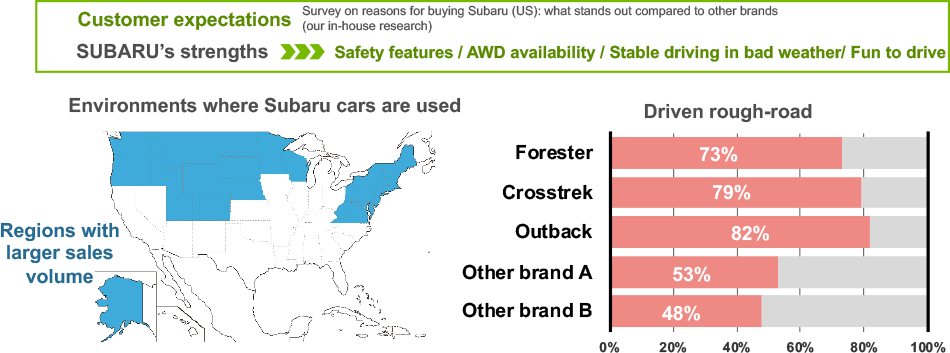
We observe that Subaru has many customers living in snowbelt regions where snow falls in winter. Also, looking at customers across the US, a high proportion of the customers drive on unpaved roads. Considering the regional climate and the way customers use their cars, it is inevitable that many customers need AWD.
For Subaru to keep responding to our customers’ expectations, we consider that it is essential for us to offer environmentally-friendly AWD vehicles.
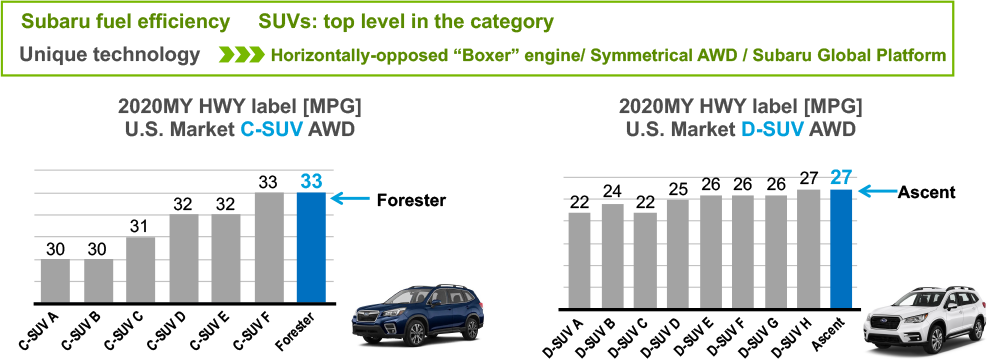
These charts show Subaru’s environmental performance in practice in the US. Forester and Ascent both boast the top-level fuel efficiency in their segments. Subaru has made use of unique technology such as its horizontally-opposed “Boxer” engine, symmetrical AWD, and Subaru Global Platform to bring AWD capability, fun to drive and high fuel efficiency. And now, we need to enhance environmental friendliness further to keep up with the times.
Technical roadmap for CO2 reduction
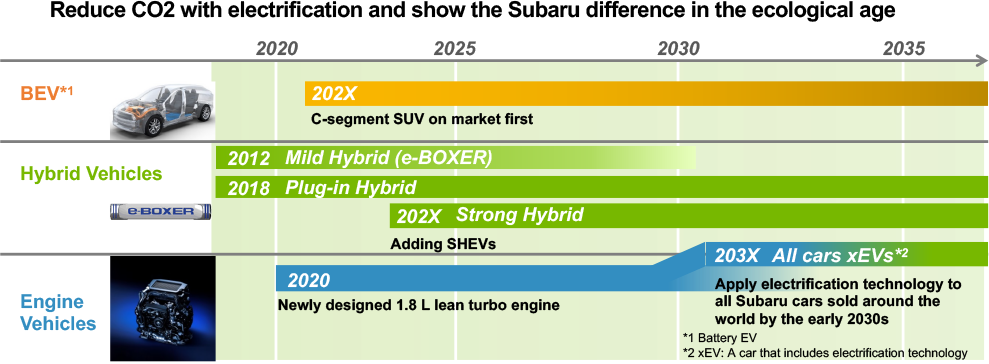
This is our technical roadmap for CO2 reduction. First, in 2019, we announced our joint development with Toyota of a battery electric vehicle (BEV). In the early 2020s, we plan to launch a C-segment SUV. Next, for hybrid electric vehicles (HEVs), Subaru has released mild hybrids (e-Boxer) to the markets including Japan, Europe and China and also introduced a plug-in hybrid model to the North American market. In the mid-2020s, we aim to release strong hybrids based on Toyota Hybrid System (THS) technology. Then, by 2030, we plan to make BEVs and HEVs sales to account for 40 percent or more of our global sales. As for engine vehicles, in 2020, we are putting our newly designed 1.8 L lean-burn turbo engine with the new Levorg. By the early 2030s, we plan to apply some sort of electrification technologies to all Subaru vehicles produced and sold.
Subaru engines
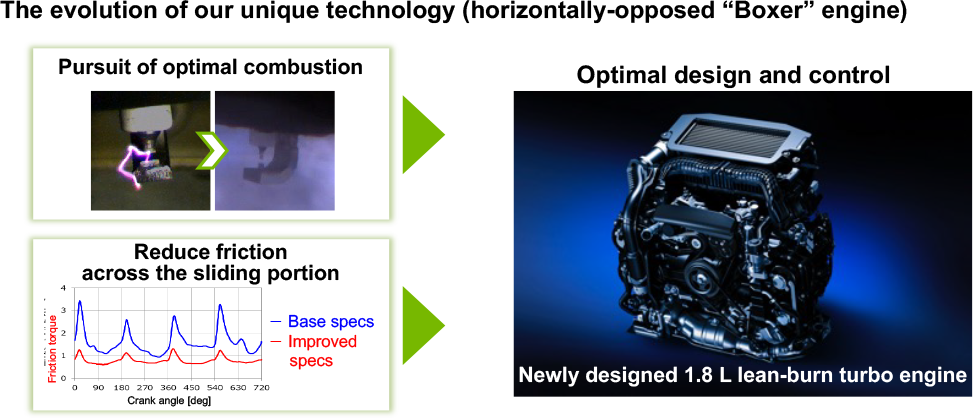
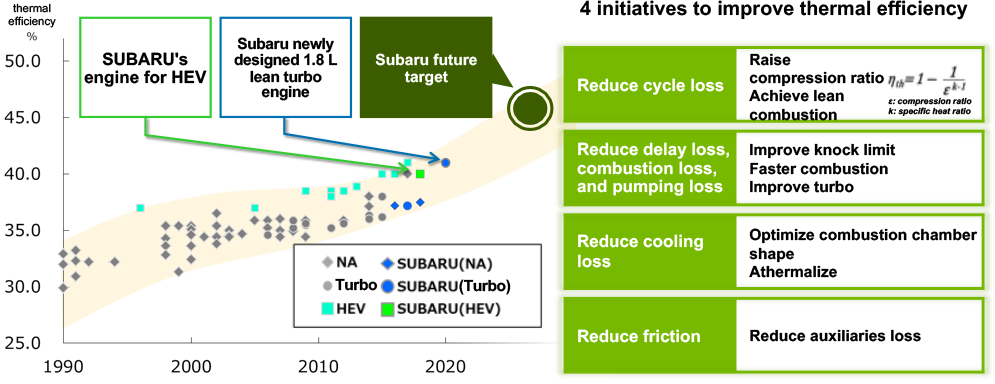
As to gasoline engines, we continue to evolve our unique technology, horizontally-opposed “Boxer” engine. By pursuing optimal combustion and reducing friction, we aim to harmonize the contradictory performances of high fuel efficiency and ample torque at a high level and we continue to develop engines suited for the ecological age.
The maximum thermal efficiency of each car maker has been rising every year. In recent years, engines for hybrids (HEVs) have been introduced and such engines have 40%-level of thermal efficiency. Subaru’s HEV engine is one of those reaching the top level of thermal efficiency, but now we are realizing even higher thermal efficiency with the newly designed 1.8L lean-burn turbo engine for the new Levorg. For the future, we aim to achieve 45% thermal efficiency by 2030 through thermal efficiency improvement of internal combustion engines by reduction of each type of loss and of friction.
Hybrid systems of Subaru
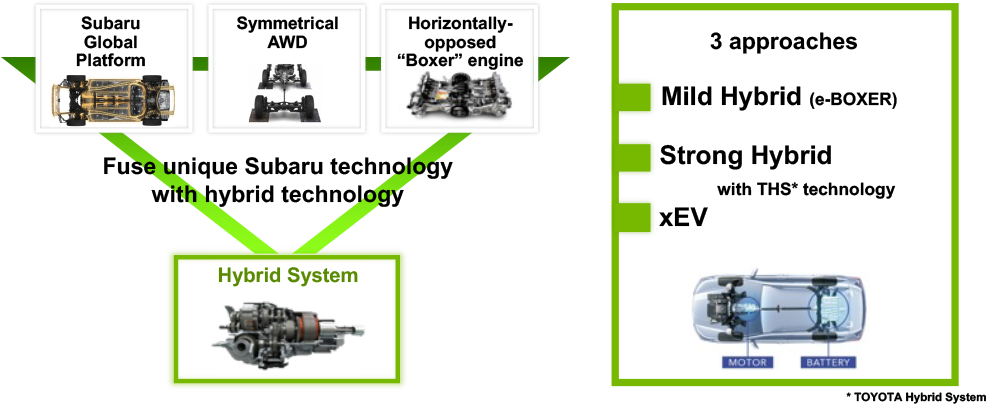
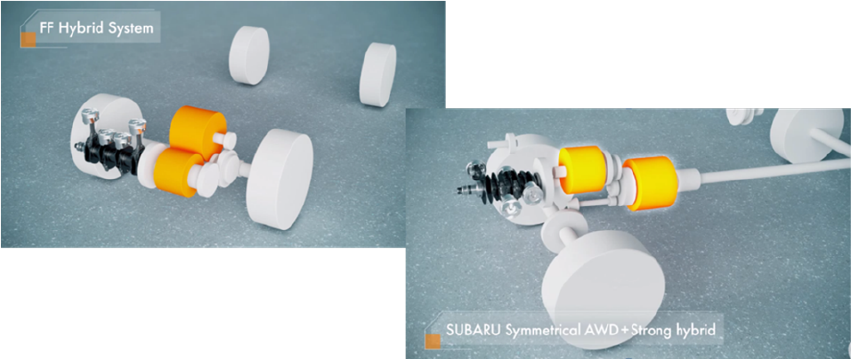
As we go on, we are planning to fuse the core technologies of Subaru, the horizontally-opposed “Boxer” engine, symmetrical AWD, and Subaru Global Platform with Toyota Hybrid System (THS) technology. We are pursuing three approaches in this regard, with the existing Subaru e-Boxer mild hybrids, the upcoming strong hybrids incorporating THS technology, and the xEVs with which we plan to add electrification technology to all Subaru vehicles by the early 2030s, in order to materialize both fun to drive and environmental performance.
For the hybrid system combining Subaru’s unique technology with THS, we are not planning to merely carry over hybrid systems for Toyota’s Front-engine Front-drive (FF) vehicles with transversely mounted engines. We are adapting THS technology for Subaru’s longitudinal power unit and AWD and redesigning the transaxle to build a hybrid car with the Subaru difference.
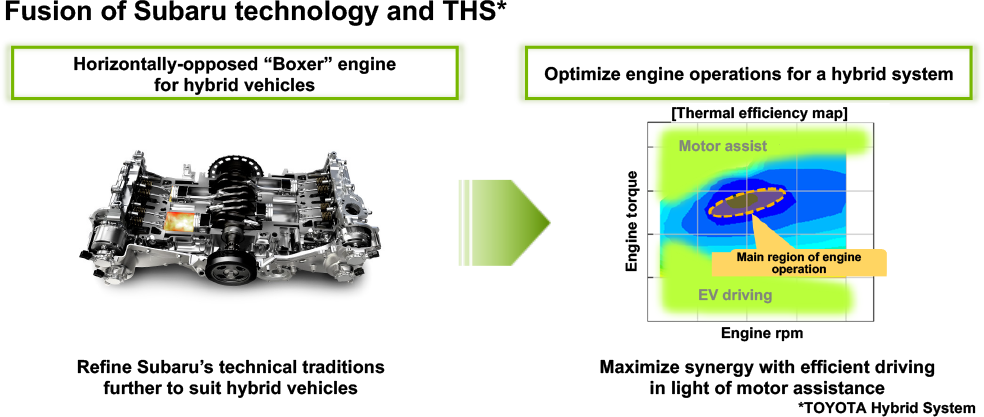
For strong hybrid vehicles, we will utilize a horizontally opposed “Boxer” engine specialized for optimal operation in a hybrid system. This specialized engine is based on technologies Subaru has cultivated. It will be utilized in the most efficient domain while considering the domain of motor assist and the domain of EV driving by a motor only. This should help us simplify the design of the engine and reduce its cost.
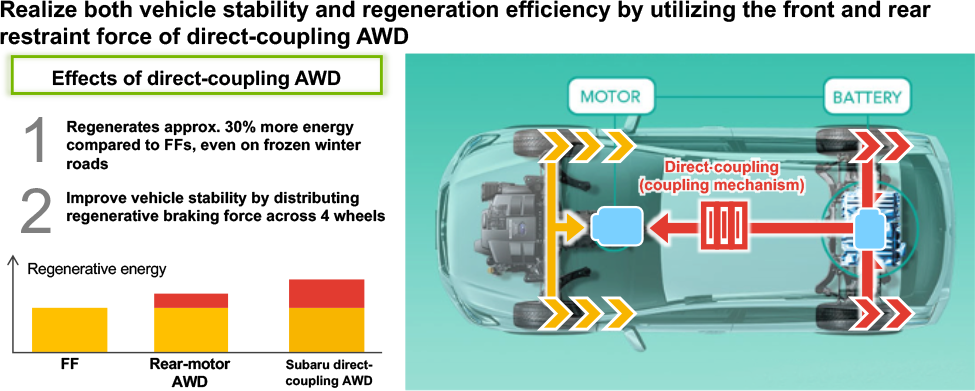
Subaru cars are commonly used in regions and usage environments that require AWD. For driving on slippery roads, such as on frozen roads in the winter, hybrid car braking regeneration needs to be safe and efficient. Regeneration with an ordinary FF car is inadequate because slippage and disturbance of vehicle behavior on roads with low μ limit the energy. Rear-motor AWD slightly improves regeneration efficiency; however, it is still inadequate because of the difficulty of using the rear tires for regeneration in terms of vehicle stability. In case of Subaru cars, front and rear tires are directly connected by the propeller shaft. This direct connecting system can maintain vehicle stability while regenerating as much energy as possible from all the wheels. As a result, they can regenerate 30 percent more energy on frozen roads compared to FF cars. Subaru’s hybrid vehicles are able to not only reduce CO2, but also enhance safety performance, AWD performance, and driving dynamics.
Subaru electric technology (BEVs)
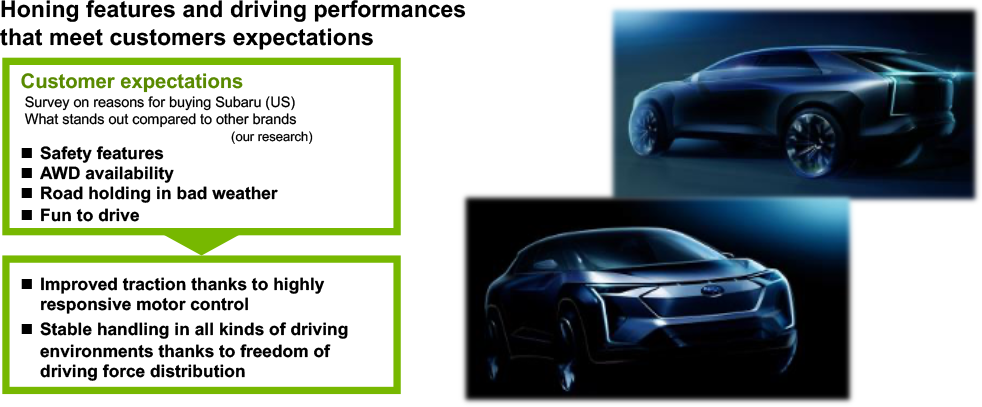
As we announced in June 2019, Subaru has been jointly developing battery electric vehicles (BEVs) with Toyota. Subaru customers expect safety features, AWD availability, road holding in bad weather, and fun to drive capabilities. We hope to fulfill these customer expectations as we provide BEV advantages: improved traction performance with highly responsive motor control, and stable handling in all kinds of driving environments utilizing freedom of front-rear driving force distribution. We incorporate know-hows on AWD technology we have cultivated and outcome of our own advanced researches on BEV into this project. Working together with Toyota to “make ever-better cars,” we will steadily develop BEV with the Subaru difference. We aim to launch this BEV to the market in the first-half of the 2020s.
